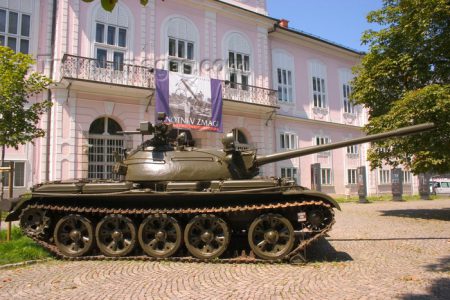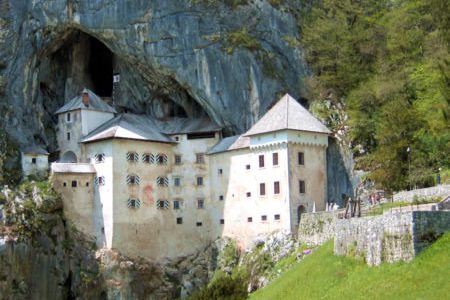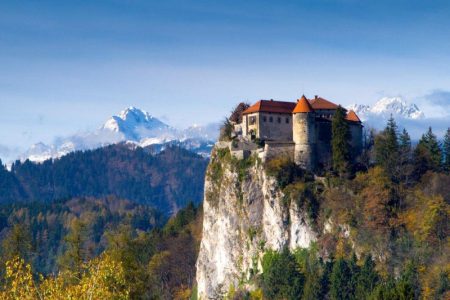A History of Slovenia
Slovenia only became an independent nation in 1991 and here, we will give a brief history of the Slovenian people and the birth of the nation.
The Early Years
The earliest record of human settlement in Slovenia was discovered in Hells Cave, located in the Loza Woods near to the town of Orehek. Two stone tools were found which were approximately 250,000 years old so the first inhabitants of Slovenia were the Neanderthals.
Slovenia was settled by Illyrian and Celtic tribes in the Bronze age and the area became part of the Roman Empire in the first century B.C. The Slovenes were a southern Slavic tribe which moved into the country in the 6th century A.D. In the 7th century, they formed the state known as Samu, which was allied with the Avars, who ruled most of the Hungarian plains, until they were defeated by the Charlemagne tribe in the 8th century AD.
The Hungarians were defeated by the Turks in 1526 and were forced to seek Austrian Hapsburg rule to avoid being part of the Turkish Empire. The Hapsburg monarchy was the first to include all of the Slovene regions under its control. Both Slovenia and Croatia became part of the Austro-Hungarian kingdom when the dual monarchy was established in 1867.
The Birth of Cultural Identity
The specific Slovene ethnic identity dates from the 16th century. At this time, the first books in the Slovene language were written and published by the preacher Primoz Trubar and his followers which saw the emergence of a specific Slovene language.
WW1 and WW2 and the Birth of Yugoslavia
In World War 1, many Slovenians died, especially on the Soča front in the west of Slovenia. Hundreds of thousands of Slovenes were conscripted to join the Austro-Hungarian army, and casualties during the war were in excess of 30,000. Following World War 1, Austria-Hungary was defeated and broke up.
After the war, Slovenia declared itself an independent nation. It joined together with Montenegro, Serbia, and Croatia on Dec. 4, 1918 to form the new nation known as the Kingdom of the Serbs, Croats, and Slovenes and in 1929, the name was changed to Yugoslavia.
When World War 2 broke out, Germany invaded and occupied Yugoslavia. Slovenia was divided among the Axis powers of Germany, Italy, and Hungary. The Slovenes fought back and conduced a guerilla war against the Axis powers. The army was led by Marshal Tito, who was later to become the leader of the nation after the war ended.
Some Slovenes collaborated with the Nazis during the war, and the Slovene home guard which fought alongside the Germans had in excess of 20,000 members. Most Slovenes, however, fought against Germany and the Axis powers. It’s estimated that around 30,000 partisans died and around 8 percent of all Slovenes died in the struggle.
Communist Yugoslavia
The Nazis were defeated in 1945. Slovenia became one of the republics of Yugoslavia which was a new communist nation and it was not until 1991 that it became a free independent country.
Politically, Slovenia was always regarded as the most liberal of the republics of Yugoslavia and started to press for greater independence in the 1980s. Slovenia threatened to leave Yugoslavia completely. In 1989, the Slovene parliament confirmed the right of the country to leave the Yugoslav federation. In 1990 the first multi-party elections were held and Milan Kucan was elected president. The majority of Slovenians voted for independence in a referendum and Slovenia declared itself an independent nation on 25, June 1991.
Independence
The Yugoslavian army tried to regain control of Slovenia and minor military skirmishes took place but the fighting was brief and only around 100 people were killed. A ceasefire was brokered by the EU and the army pulled its troops out of Slovenia. In terms of the break up of Yugoslavia, the war in Slovenia was brief and there was little bloodshed, unlike in the wars in Croatia, Bosnia and Serbia.
Slovenia Today
In 1992, the European Community, recognised Slovenia as an independent nation and the country moved towards getting membership of the EU and NATO, joining both in 2004.
Slovenia was always the richest region of the former Yugoslavia, and the transition from a communist economy to a free market one was achieved quickly. On 1 January 2007, it became the first of the new EU member states to join the eurozone and in 2008 it became the first former communist state to hold the EU presidency.
Slovenia today is a vibrant and beautiful country and a place which offers a great vacation or a great location to invest. If you would like to visit, you can view our Properties to Rent or you can look at an Investment Property for Sale which can offer solid capital growth and high rental incomes. Slovenia offers a lot for anyone in terms of investment or pleasure and you will find all you need to know about Slovenia on this site.














